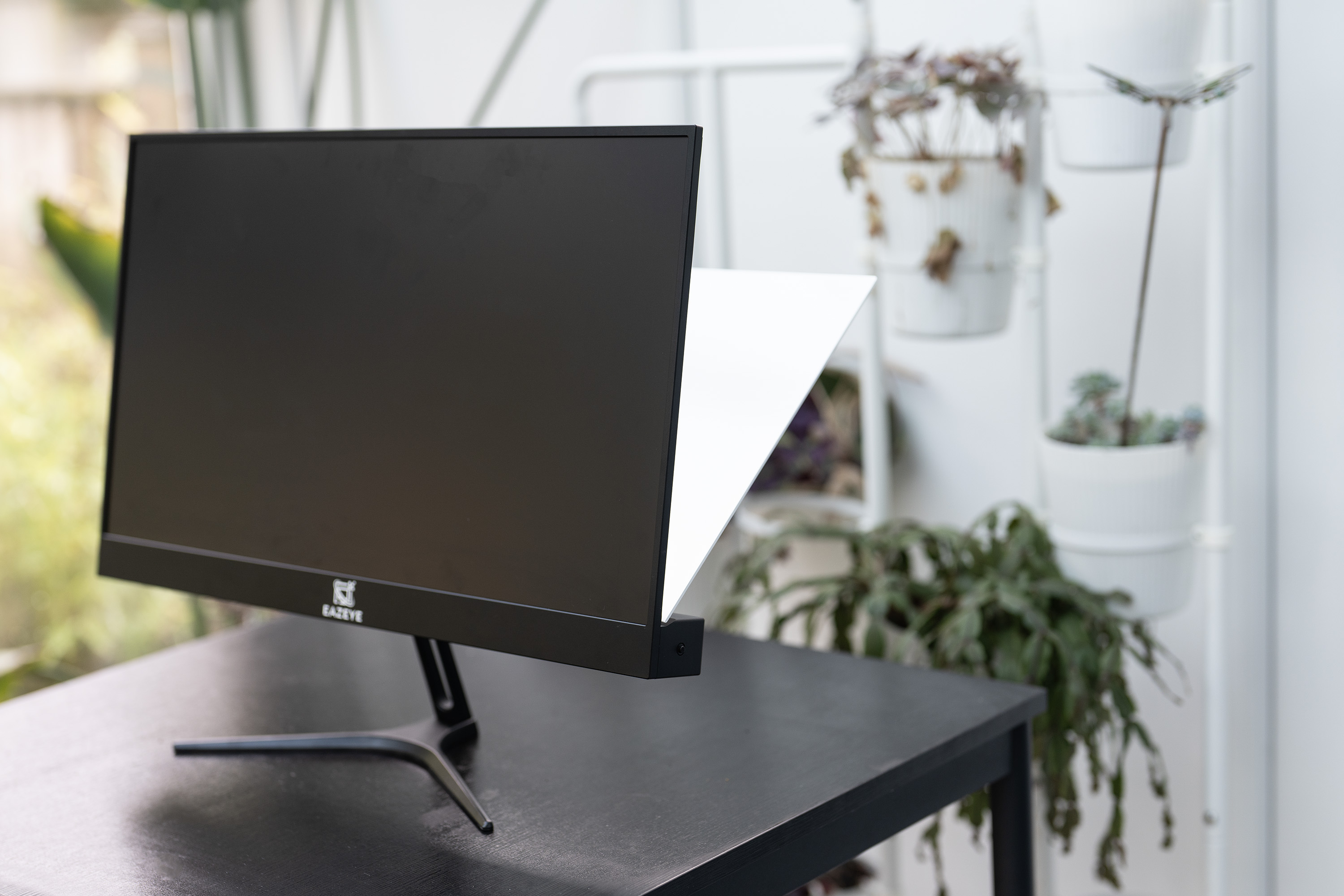Our Verdict
We admire the Eazeye for taking on the two biggest problems with the screens we stare at all day – power consumption and eye strain – in such a creative way, but its lack of brightness and colour accuracy means it’s hard to recommend. This innovative solution isn’t going to replace the best LED-backlit or OLED monitors any time soon.
For
- Creative approach to monitor design
- Low power draw
- Optional LED light bar
Against
- Tricky to calibrate
- Very dim
- The British weather
Why you can trust Creative Bloq
Before we start this Eazeye review, a little glimpse behind the curtain. Most of the time, the reviews you'll enjoy on this site are the result of complex and subtle negotiations carried out between those who dwell on the higher floors of the Creative Bloq skyscraper and the fine PR people who have products to publicise from the likes of Apple, Benq and more.
Occasionally, however, an email lands in an unsuspecting inbox that comes directly from the creator of something unusual and new, and such was the case with the Eazeye, whose creator is 17-year-old Louis Huang, a high school student from Hong Kong. He’s raising money for a production run on Indiegogo.
Where most monitors use a backlight, either an array of LEDs or a folded tube that sits behind the LCD matrix, the Eazeye taps into the ambient light of the room it's in, with a white reflective panel that hinges from the back of the screen to collect light and thus provide illumination - though there is an LED light bar too, for when it gets too dark. The benefit of this is not only that it’s easier on the eye, reducing tiredness and appearing a little like an e-ink screen, but also that it uses less power.
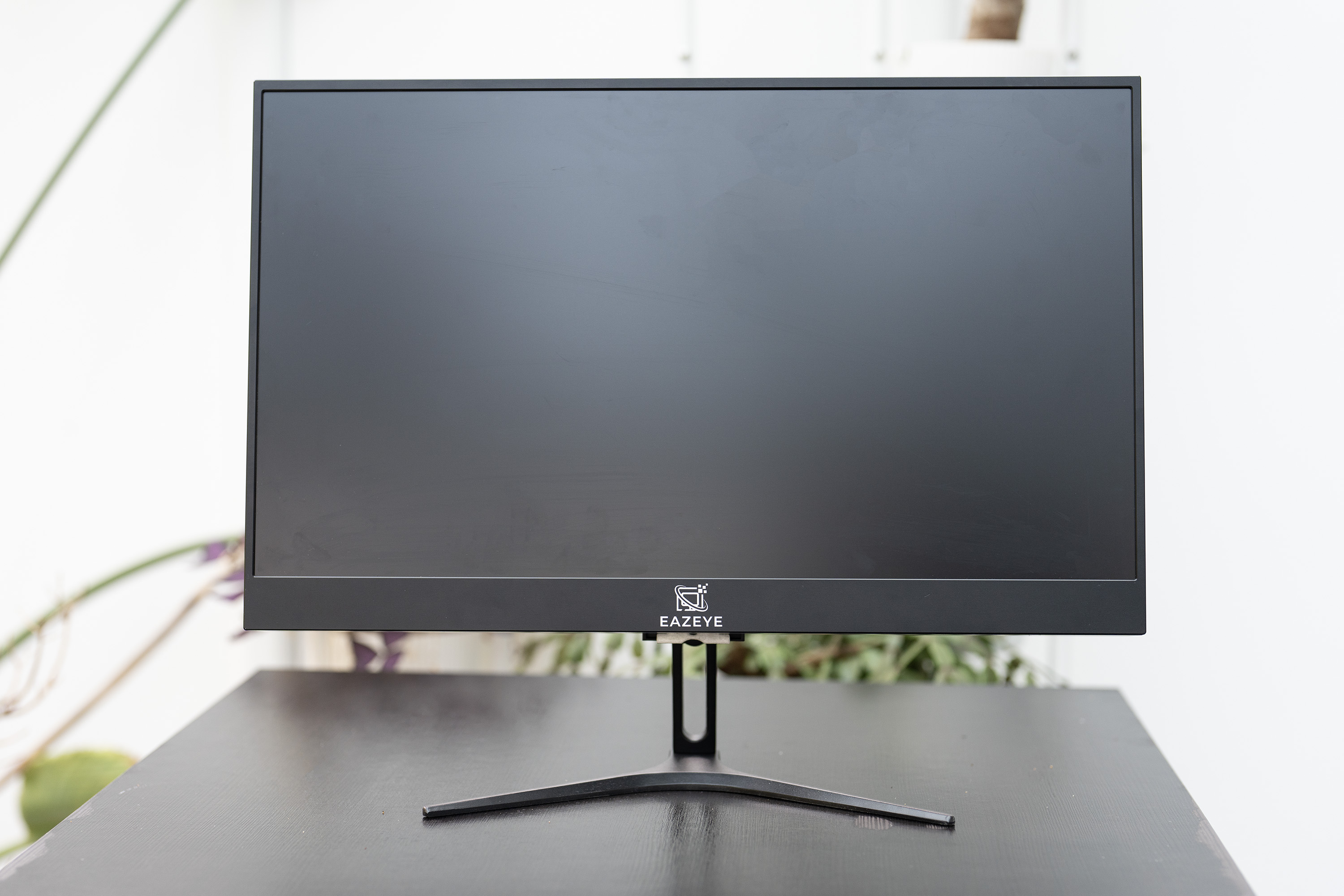
Eazeye review: Key specs
| Resolution: | 1920x1080p |
| Refresh rate: | 75Hz |
| Connectivity: | 1x HDMI, 1x VGA |
| Screen size: | 24in |
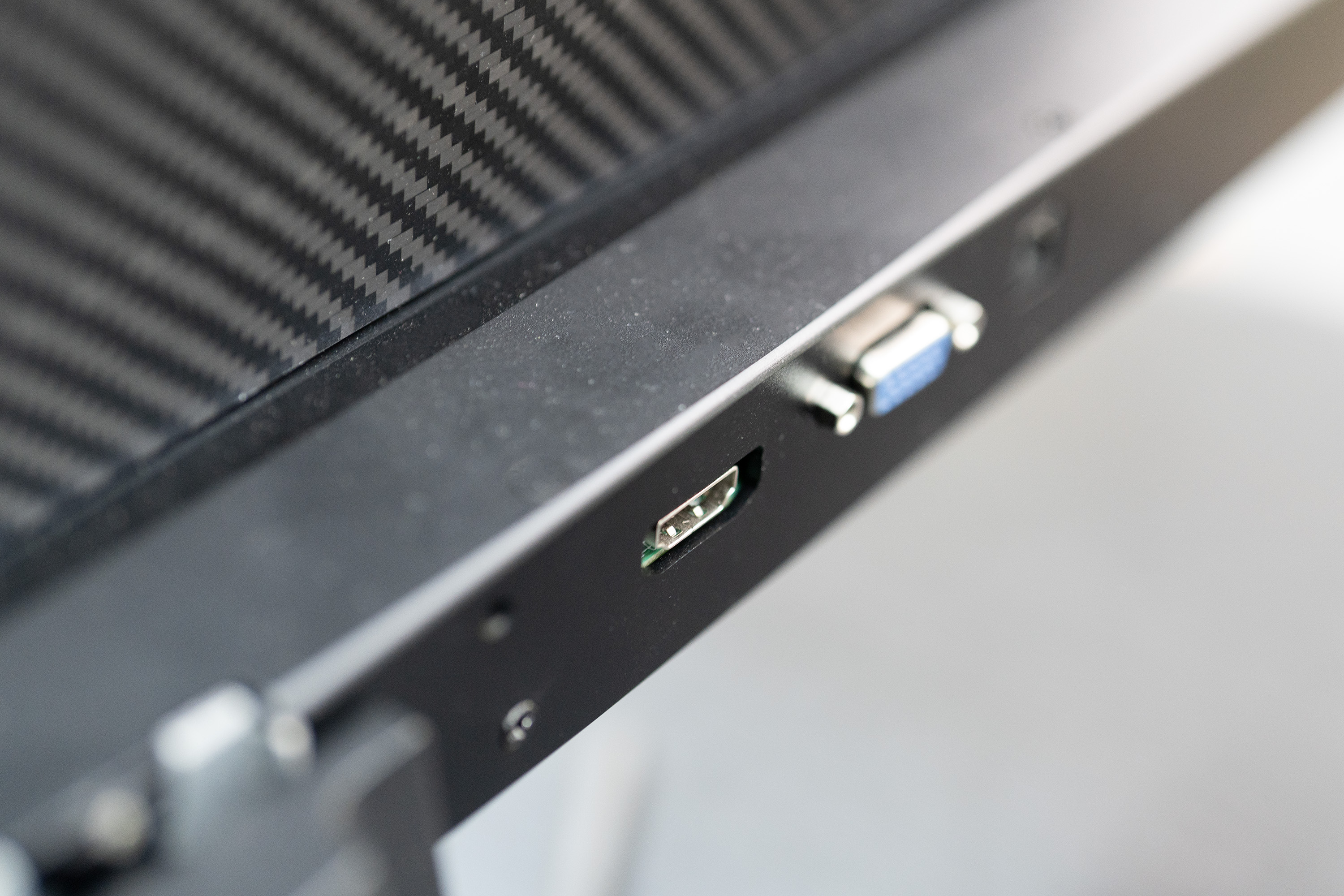
Eazeye review: Design and build
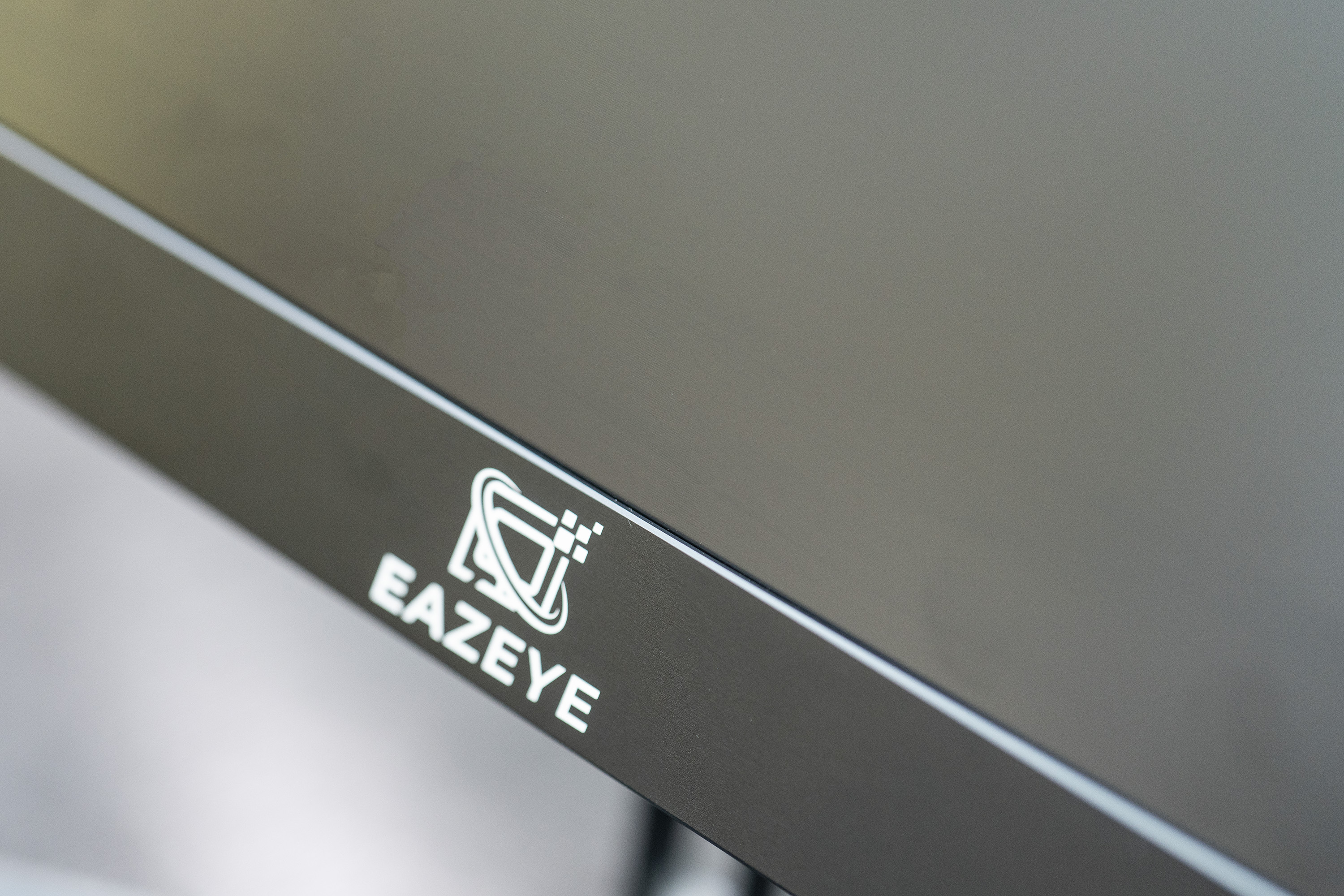
In the box along with the screen is a monitor stand, and it baffled us for a moment as we tried to attach it. There's a part of the mounting mechanism that needs to be removed before the foot is slotted into place, and once we’d been shown that, it connected straight away. In hindsight, it’s a good choice, as you only need to use a single screw to put the two parts of the stand together.
Usually, we like to declutter our desk by using a monitor arm attached to the screen’s VESA mount, but that isn’t an option here. You need a few inches of space behind the Eazeye so it can gather light, which means it’s not a great choice for fitting tightly up against a wall. In a brightly lit office environment or a sunny conservatory for the WFH crowd, it can work.
It’s worth noting that we’re writing this before the Indiegogo campaign has even started, so it’s very much an early model. Ours came with a two-pronged type-A power adapter, though a British three-pin adapter was thoughtfully popped in the packaging, and an HDMI cable.
Things like the stand aside, there's a lot to like about the Eazeye. It’s incredibly slim, the bezel has a low profile, and there's a 75Hz refresh rate. At 24in and 1080p, the size and resolution are nothing special, and there's an eye-catching white logo in the middle of a bottom bar that’s larger than on other monitors because it’s where all the electronics live. We would also have liked to have seen a DisplayPort, second HDMI or even a USB-C input, but perhaps there are enough people out there still using VGA to justify its inclusion.
Daily design news, reviews, how-tos and more, as picked by the editors.
Eazeye review: Performance
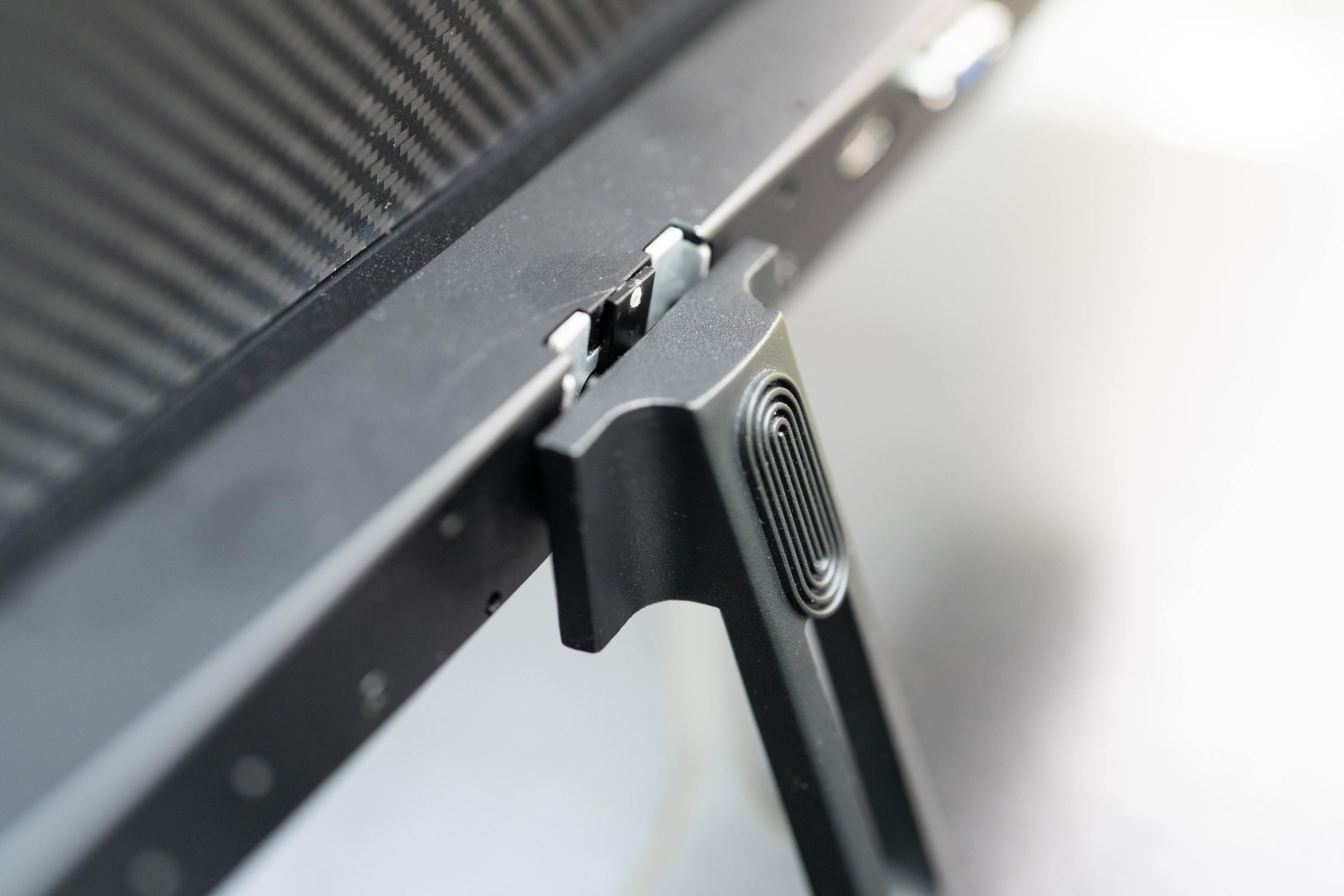
You’re not going to buy this monitor with the intention of using the backlight all the time, so positioning is important – especially if you live somewhere gloomy – to make sure it gets all the light it needs. This can mean placing it with its back to a window and removing the reflector panel altogether, or installing it directly below a ceiling lamp and tilting the panel to catch enough light to reflect up and into the back of the screen.
The Eazeye’s biggest problem is that it’s just so dim. With the backlight switched on, we measured only 12 nits of brightness and 83% of the SRGB colour gamut. For comparison, the five-year-old ASUS monitor next to it on the desk managed 183 on the brightness chart, and 93% of SRGB. If you’re relying on ambient light, then screen brightness is entirely dependent on the level and colour of the light around you, and can change throughout the day, which makes any sort of accurate calibration impossible.
Should I buy the Eazeye?
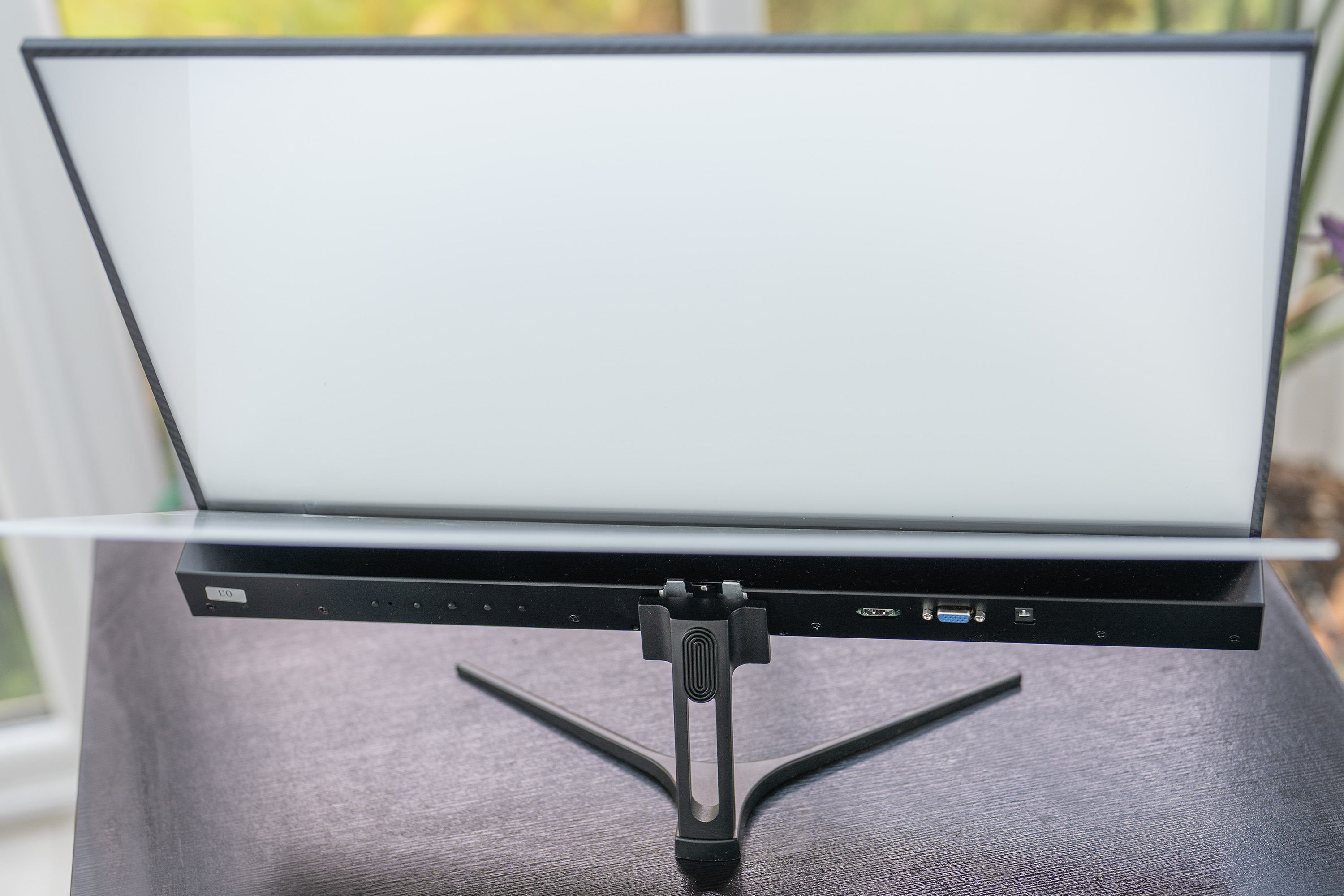
The Eazeye might make an acceptable second monitor in a brightly lit office and could have applications if you’re working extremely remotely and have a limited power budget, but its brightness level is just not high enough unless you’re very creative with lighting positioning.
At the time of writing, the Eazeye is just about to launch its Indiegogo campaign. It’s a great idea, and we’re really pleased to see a monitor that approaches the common problems of eye strain and power consumption in such a refreshing way. However, it’s not something that you can try before you buy, and the price hasn’t been announced publicly yet, so it might be best to watch and see if it takes off, or if a second version with a better backlight is launched. Then remember that you saw it here first.
out of 10
We admire the Eazeye for taking on the two biggest problems with the screens we stare at all day – power consumption and eye strain – in such a creative way, but its lack of brightness and colour accuracy means it’s hard to recommend. This innovative solution isn’t going to replace the best LED-backlit or OLED monitors any time soon.

Ian Evenden has been a journalist for over 20 years, starting in the days of QuarkXpress 4 and Photoshop 5. He now mainly works in Creative Cloud and Google Docs, but can always find a use for a powerful laptop or two. When not sweating over page layout or photo editing, you can find him peering at the stars or growing vegetables.
